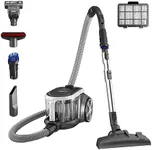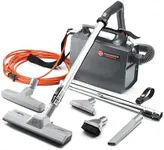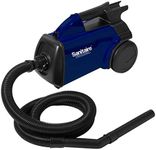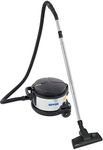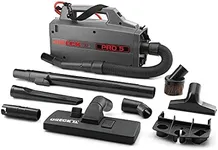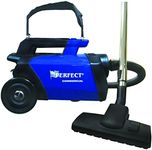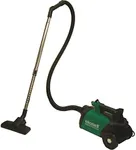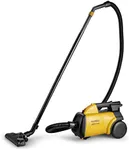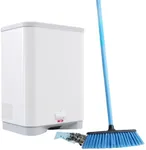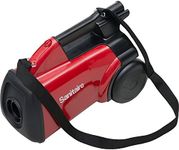Buying Guide for the Best Canister Commercial Vacuums
Choosing the right canister commercial vacuum can make a significant difference in maintaining cleanliness and efficiency in a commercial setting. These vacuums are designed to handle larger spaces and more demanding cleaning tasks than typical household vacuums. When selecting a canister commercial vacuum, it's important to consider various specifications to ensure it meets your specific needs. Here are some key specs to look at and how to navigate them.Suction PowerSuction power is a measure of how effectively the vacuum can pick up dirt and debris. This is crucial for commercial vacuums as they need to handle larger areas and more stubborn dirt. Suction power is often measured in watts or air watts. Higher suction power means better cleaning performance, especially on carpets and rugs. For light cleaning tasks, a lower suction power may suffice, but for heavy-duty cleaning, opt for a vacuum with higher suction power.
Filtration SystemThe filtration system determines how well the vacuum can trap dust, allergens, and other particles. This is particularly important in commercial settings where air quality can affect many people. HEPA filters are the gold standard, capturing 99.97% of particles as small as 0.3 microns. If maintaining high air quality is a priority, choose a vacuum with a HEPA filter. For less critical environments, a standard filter may be adequate.
CapacityCapacity refers to the size of the dust bag or bin. A larger capacity means the vacuum can hold more dirt before needing to be emptied, which is beneficial for large commercial spaces. Capacity is usually measured in liters. For small to medium-sized areas, a capacity of 4-6 liters may be sufficient. For larger areas or more frequent cleaning, look for a capacity of 8 liters or more to reduce the frequency of emptying.
Weight and ManeuverabilityWeight and maneuverability are important for ease of use, especially in large commercial spaces with lots of furniture or obstacles. Lighter vacuums are easier to move around but may have smaller capacities. Consider the layout of the space you'll be cleaning. If it has many tight corners and obstacles, a lighter, more maneuverable vacuum will be easier to use. For open spaces, weight may be less of a concern.
Noise LevelNoise level is measured in decibels (dB) and indicates how loud the vacuum will be during operation. This is important in commercial settings where excessive noise can be disruptive. Quieter vacuums, typically below 70 dB, are ideal for environments like offices or hotels where noise can be a disturbance. In industrial settings where noise is less of a concern, a louder vacuum may be acceptable.
Cord Length and ReachCord length and reach determine how far you can move the vacuum without needing to switch power outlets. This is particularly important in large commercial spaces. A longer cord, typically 30 feet or more, allows for greater mobility and efficiency. If you have a large area to clean, look for a vacuum with a longer cord to minimize interruptions. For smaller areas, a shorter cord may be sufficient.
Attachments and AccessoriesAttachments and accessories enhance the versatility of the vacuum, allowing it to clean different surfaces and hard-to-reach areas. Common attachments include crevice tools, upholstery brushes, and floor nozzles. Consider the types of surfaces and areas you'll be cleaning. If you need to clean a variety of surfaces, look for a vacuum with a range of attachments. For more specialized cleaning tasks, specific attachments may be necessary.
